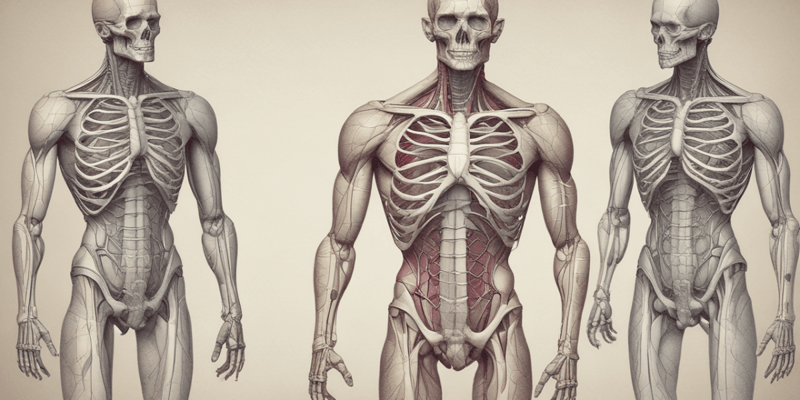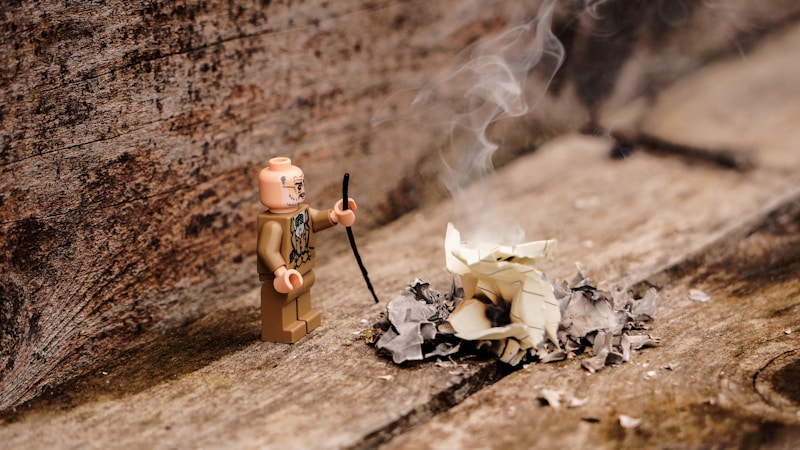64 Questions
Which muscle anchors and depresses the clavicle?
Subclavius
Which nerve innervates the serratus anterior muscle?
Long thoracic nerve
What is the main action of the serratus posterior inferior muscle?
Depress ribs
Which artery supplies the thoracic wall?
Thoracic aorta
What is the function of the transversus thoracis muscle?
Weakly depress ribs
How many pairs of thoracic spinal nerves are there?
12
What is the origin of the levator costarum muscle?
Transverse processes of C7-T11
What is the function of the internal intercostal muscle?
Depress ribs
What is the name of the fascia that invests the muscles of the thoracic wall?
Deep fascia
What accompanies the intercostal arteries and nerves in the thoracic wall?
Veins
What is the number of posterior intercostal veins?
11
What is the location of the mammary glands?
In the sq tissue overlying pectoralis major and minor
What is the bed of the breast formed by?
Pectoral fascia and fascia of the serratus anterior
What is the name of the space between the breast and the anterior thoracic wall?
Retromammary space
What is the function of the lactiferous ducts?
To transport milk
What is the main arterial supply to the breast?
The medial mammary branches
What is the main function of the thorax?
To protect the organs of the cardiovascular and respiratory systems
How many pairs of ribs are found in the thoracic skeleton?
12 pairs
What is the name of the muscle that adducts and medially rotates the humerus?
Pectoralis major
What is the term for the joints between the ribs and vertebrae?
Costovertebral joints
What is the name of the process that forms the floor of the thorax?
Diaphragm
How many thoracic vertebrae are there in the thoracic skeleton?
12 thoracic vertebrae
What is the main action of the pectoralis minor muscle?
To stabilize the scapula by drawing it inferiorly
What is the term for the bony structure that forms the anterior part of the thoracic cage?
Sternum
What is the innervation of the pectoralis major muscle?
Lateral and medial pectoral nerves
What is the name of the joints between the costal cartilages?
Interchondral joints
What is the name of the muscle that lies deep to the external intercostal muscle?
Internal intercostal
Which vein is associated with the internal thoracic artery?
Pericardiacophrenic vein
What is the name of the artery that supplies the thoracic wall?
Anterior intercostal artery
Which muscle is not part of the thoracic wall?
Pectoralis major muscle
What is the name of the nerve that innervates the muscles of the thoracic wall?
Intercostal nerve
What is the name of the space between the breast and the anterior thoracic wall?
Retromammary space
What is the origin of malignant tumors, such as adenocarcinomas, in the breast?
From epithelial cells of lactiferous ducts
What is the result of a tumor enlarging and attaching to the suspensory ligament?
Shortening of the ligament
What percentage of lymphatic drainage of the breast is attributed to the anterior axillary lymph nodes?
75%
What is the primary lymph node responsible for lymphatic drainage of the breast?
Anterior axillary (pectoral)
What is removed during a mastectomy?
The breast, pectoral muscles, fat, fascia, and lymph nodes
Why did the 43-year-old woman present with a winged scapula after a double mastectomy?
Due to removal of the pectoral muscles
What is the primary function of the lactiferous ducts in the breast?
To transport milk
What is the result of a tumor attaching to the suspensory ligament?
The ligament shortens
What is the function of the Musculophrenic nerve?
Motor function of the diaphragm
Which artery supplies the thoracic wall?
Internal thoracic artery
What is the function of the Phrenic nerve?
Motor function of the diaphragm
Which vein accompanies the internal thoracic artery?
Internal thoracic vein
What is the function of the Transversus thoracis muscle?
Elevates the ribs
Which muscle anchors and stabilizes the scapula?
Serratus anterior muscle
What is the function of the Anterior intercostal artery?
Supplies the thoracic wall
Which nerve innervates the breast?
Intercostal nerve
What is the result of injury to the long thoracic nerve?
Paralysis of the serratus anterior muscle
Which type of cancer is mentioned in the review outline?
Carcinoma of the breast
What is the purpose of the mastectomy mentioned in the review outline?
To treat carcinoma of the breast
What is the name of the nerve that is injured, causing paralysis of the serratus anterior muscle?
Long thoracic nerve
What is the main topic of the review outline?
Breast anatomy and cancer
What is the result of paralysis of the serratus anterior muscle?
Winged scapula
What is the primary function of the ascending aorta?
Supplies the upper limbs, head, and neck
Which muscle is responsible for elevating the ribs during forced inhalation?
External intercostal muscle
What is the origin of the transversus thoracis muscle?
Xiphoid process and lateral aspect of the sternum
Which nerve is associated with the pericardiacophrenic muscle?
Phrenic nerve
What is the function of the pulmonary trunk?
Supplies the lungs
Which intercostal muscle is involved in depressing the ribs during forced exhalation?
All of the above
What is the origin of the superior epigastric artery?
Internal thoracic artery
Which muscle is involved in the innervation of the serratus anterior muscle?
Long thoracic nerve
What is the name of the space between the breast and the anterior thoracic wall?
Submammary space
Which artery is involved in the supply of the thoracic wall?
Internal thoracic artery
Study Notes
The Thorax
- The thorax is the part of the body between the neck and abdomen, with its circumference increasing inferiorly and reaching maximum size at the junction with the abdominal portion of the trunk.
- The thorax contains the primary organs of the cardiovascular and respiratory systems.
Thoracic Wall
- The thoracic skeleton consists of 12 pairs of ribs and their costal cartilages, 12 thoracic vertebrae and IV discs, and the sternum (manubrium, body, and xiphoid process).
- The thoracic apertures include the superior and inferior thoracic apertures.
- Joints in the thoracic wall include intervertebral, costovertebral, costochondral, interchondral, sternocostal, sternoclavicular, manubriosternal, and xiphisternal joints.
Muscles of the Thoracic Wall
- Axio-appendicular muscles include pectoralis major, pectoralis minor, subclavius, serratus anterior, serratus posterior superior, serratus posterior inferior, levatores costarum, intercostal, subcostal, and transversus thoracis.
- Pectoralis major has a clavicular head that adducts and medially rotates the humerus, and a sternocostal head that extends the humerus from the flexed position.
- Pectoralis minor stabilizes the scapula by drawing it inferiorly and anteriorly against the thoracic wall.
Intercostal Nerves
- The 12 pairs of thoracic spinal nerves include typical nerves (T3-6, T7-11) and nerve blocks.
Arteries and Veins
- The three sources of blood supply to the thorax are the thoracic aorta, subclavian artery, and axillary artery.
- The posterior intercostal arteries and subcostal arteries arise from the thoracic aorta.
- The intercostal veins accompany the intercostal arteries and nerves, and the posterior intercostal veins anastomose with anterior intercostals.
Breast
- The breast consists of glandular and supporting fibrous tissue embedded in a fatty matrix, along with blood vessels, lymphatics, and nerves.
- The mammary glands are located in the subcutaneous tissue overlying pectoralis major and minor.
- The breast extends from the lateral border of the sternum to the midaxillary line, and from the 2nd to 6th ribs.
Neurovasculature of the Breast
- The arterial supply to the breast arises from the medial mammary branches, lateral thoracic artery, and posterior intercostal artery.
- The axillary vein drains the breast, and lymphatics drain into the axillary lymph nodes.
- Nerves supplying the breast include intercostal nerves and branches of the brachial plexus.
Thoracic Wall
- Composed of bones and joints
- Muscles involved: · External intercostal · Internal intercostal · Innermost intercostal · Transversus thoracis
Muscles and Functions
- Muscles of the thoracic wall: · External intercostal · Internal intercostal · Anterior intercostal · Internal thoracic · Transversus thoracis · Musculophrenic · Pericardiacophrenic
Blood Vessels and Blood Supply
-
Arteries: · Anterior intercostal · Internal thoracic
-
Veins: · Superior vena cava · Superior epigastric · Musculophrenic · Pericardiacophrenic### Thoracic Wall
-
The thoracic wall is composed of three layers: external intercostal, internal intercostal, and innermost intercostal muscles.
-
The external intercostal muscles elevate ribs during forced inhalation.
-
The internal intercostal muscles depress ribs during forced exhalation.
-
The innermost intercostal muscles also depress ribs during forced exhalation.
Intercostal Nerves
- Intercostal nerves are responsible for muscular innervation and sensory innervation.
- The phrenic nerve arises from nerve roots C3, C4, C5, and travels with the pericardiacophrenic artery.
- The phrenic nerve has sensory function, innervating the fibrous pericardium, mediastinal pleura, and diaphragmatic peritoneum.
- The phrenic nerve has motor function, innervating the diaphragm.
Blood Supply
- The ascending aorta supplies the upper limbs, head, and neck.
- The pulmonary trunk supplies the lungs.
- The right atrium receives blood from the superior vena cava.
- The superior vena cava receives blood from the union of the right and left brachiocephalic veins.
- The right atrium drains blood into the right ventricle.
Circulation
- Systemic circulation involves the ascending aorta and supplies the upper limbs, head, and neck.
- Pulmonary circulation involves the pulmonary trunk and supplies the lungs.
Muscles of the Thoracic Wall
- The transversus thoracis muscle depresses ribs during forced exhalation.
- The levatores costarum muscles elevate ribs during forced inhalation.
- The serratus anterior muscles rotate the scapula and assist in forced inhalation.
Thoracic Wall Innervation
- The intercostal nerves are responsible for muscular innervation and sensory innervation.
- The phrenic nerve is responsible for innervation of the diaphragm.
- The phrenic nerve has sensory function, innervating the fibrous pericardium, mediastinal pleura, and diaphragmatic peritoneum.
Blood Flow
-
Blood flows from the superior vena cava to the right atrium.
-
Blood flows from the right atrium to the right ventricle.
-
Blood flows from the right ventricle to the pulmonary trunk.
-
Blood flows from the pulmonary trunk to the lungs.### Thoracic Wall Muscles
-
External intercostal muscle
-
Internal intercostal muscle
-
Anterior intercostal muscle
-
Internal thoracic muscle
-
Innermost intercostal muscle
-
Transversus thoracis muscle
-
Musculophrenic muscle
-
Pericardiacophrenic muscle
Veins
- Superior vena cava
Arteries
- Anterior intercostal artery
- Internal thoracic artery
- Ascending aorta
- Pulmonary trunk
Nerves
- Phrenic nerve (sensory and motor functions)
Carcinoma of the Breast
- Malignant tumors (adenocarcinomas) arising from epithelial cells of lactiferous ducts in mammary gland lobules
- Tumor enlarges and attaches to the suspensory ligament, shortening it
Lymphatic Drainage of the Breast
- 75% of lymphatic drainage occurs through parasternal lymph nodes
- 25% of lymphatic drainage occurs through anterior axillary (pectoral), posterior axillary (subscapular), and lateral axillary (humeral) lymph nodes
Mastectomy
- Removal of the breast, pectoral muscles, fat, fascia, and lymph nodes in the axilla and pectoral region
- Can result in winged scapula due to injury to the long thoracic nerve causing paralysis of serratus anterior muscle
This quiz covers the anatomy of the thorax, including the breast, thoracic muscles, bony anatomy, and intercostal nerves.
Make Your Own Quizzes and Flashcards
Convert your notes into interactive study material.
Get started for free


